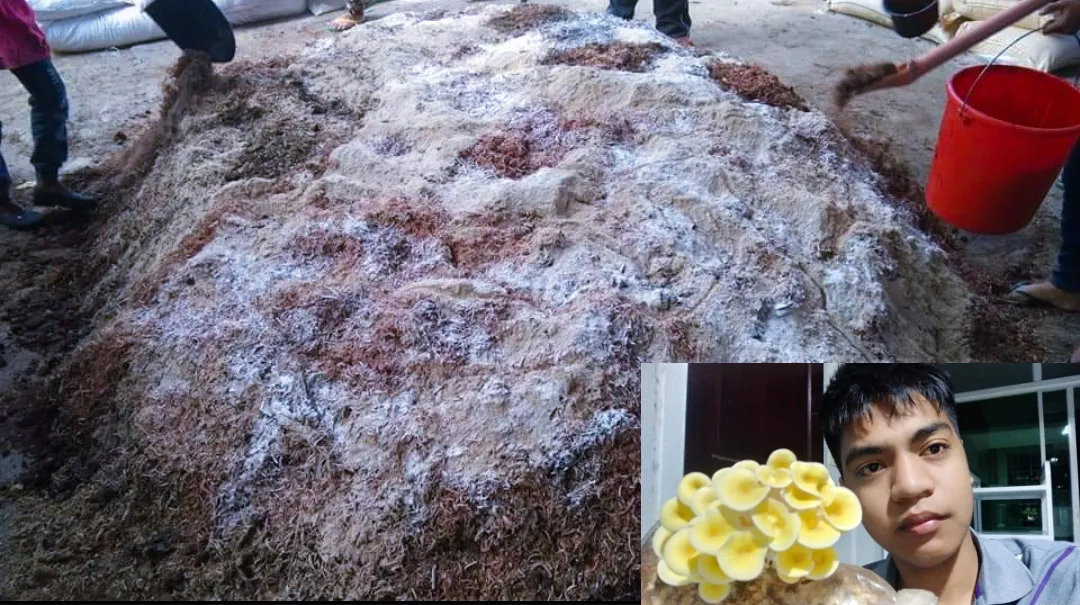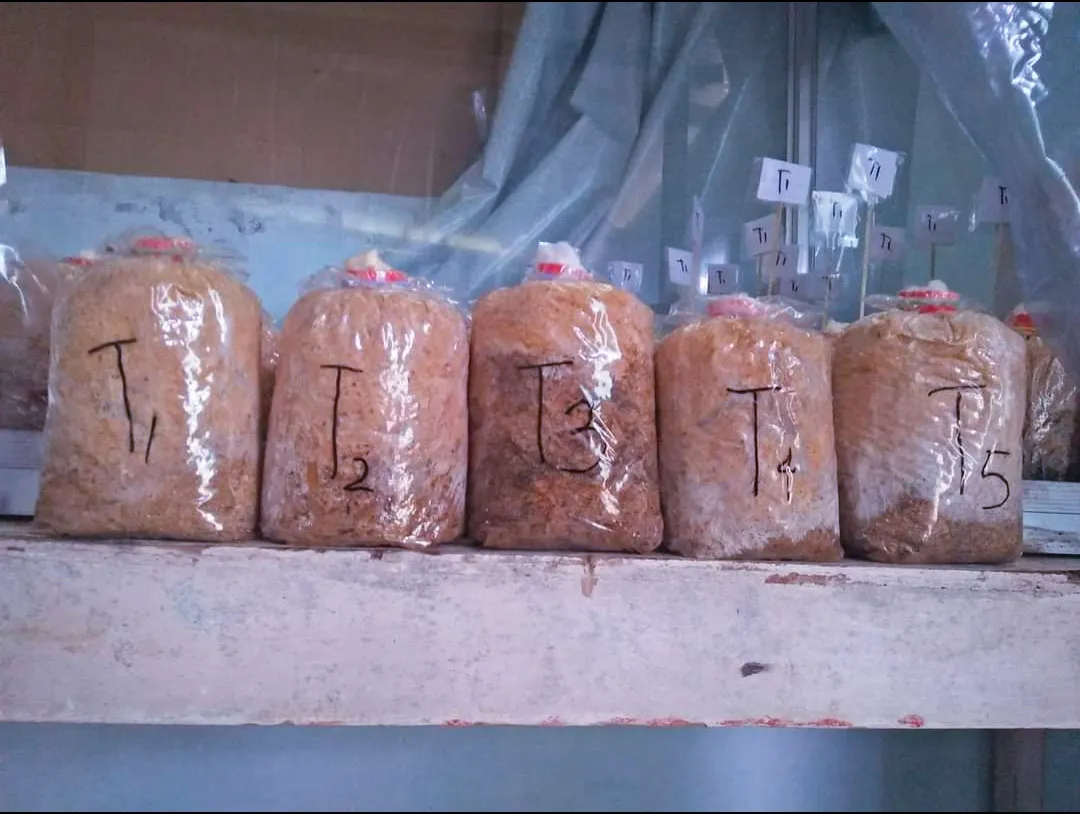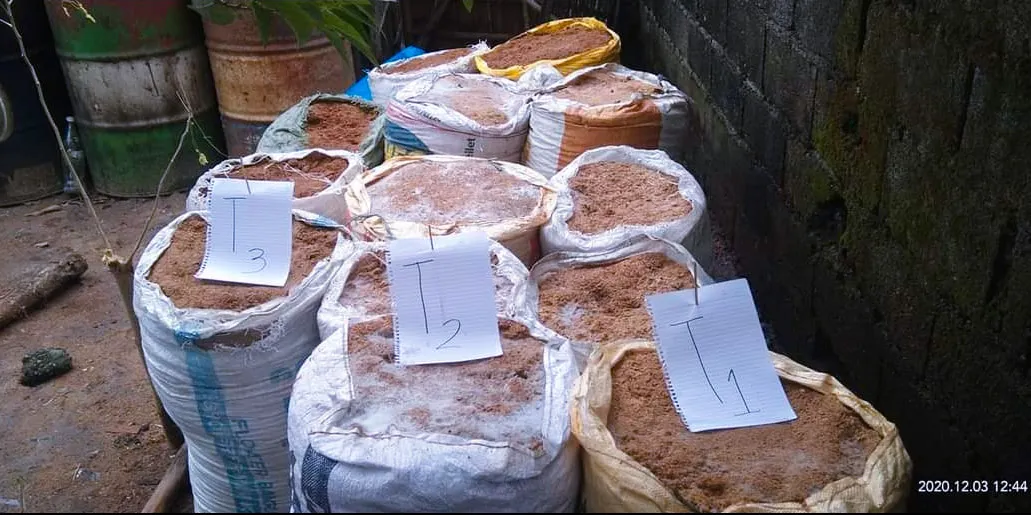
Have you not been curious about why mushroom grows anywhere? From the trees, dried leaves, dung, soils, and anywhere, even your concrete wall grows mushrooms sometimes. Or have you not been questioned why there were a lot of scattered mushrooms overgrowing after the thunderstorm? They formed their fruiting bodies. Some are wild yet edible, and others are poisonous or strange looking. In the second part, we will now make a portion of mushroom food.
The first part was titled The Simple Lab: How Do I Make My Mushroom Spawn At Home? and we talked about how to make a mushroom grain spawn, now goes to the next level, the preparation of substrate mixture.
To understand the substrate, simply as the food of mushrooms. The mushroom wasn't plant or animal. They are different. At first, science considered them as plants, yet they don't need sunlight and photosynthesis, so they disagreed with becoming one; in fact, there was no characteristic of the plant that was similar to a mushroom, just the mycelia that look like plant roots yet they are not a root.
We could grow mushrooms even if we don't make anything. The backyard where you place dead lumber or tree trunk could give you mushrooms, but there are some twists. You don't know when and where the mushroom grows, or if the edible will grow or the wild poison. So farmers make sure they make in the deadline, instead of waiting for the rainy season, they are the ones to make possible even in the summer, instead of waiting for the trees to decompose we shall force it, FastTrack the period, that how the mushroom production born.
MATERIAL IN MAKING MUSHROOM SUBSTRATE.

- Saw Dust (50%)
- Rice bran (35%)
- Agricultural lime (10%)
- Sugar (5%)
Mushroom only grows in decomposed organic materials. The problem with sawdust is that it takes more time to decompose. It also needed to be in an open area frequently watered by the rain. We could fast-track the decomposition by adding materials such listed above.
The Rice bran helps the sawdust decompose, and the carbohydrates it contains help the microbes do the job as the rice bran dominates the acidity of the substrate sawdust. Hence, we need agricultural lime to alternate the acidity of the rice bran. And sugar as glucose is a bank, and the mushroom needs that in the future.
The primary need of a mushroom is only "Nitrogen, sugar, and carbohydrates" Nitrogen is present anywhere, especially the thunderstorm. After decomposition, sugar or glucose happens from the dead materials of leaves and woods. Still, we FastTrack that by adding brown sugar or molasses, carbohydrates from the rice bran, yet it's naturally occurring in the sawdust after years of decomposition.
The goal of farmers is to compile all the mushrooms needs in one bag or fruiting bag.
In the finale, 30 days of decomposition of the sawdust seems long, but actually, it was the shortest decomposition period that was helped by the materials I listed above. You could test if the substrate is fully decomposed or ready to use by pushing the color that needed to be brown. From testing, the pH level must not be acidic, and moisture content must be under 40%. It's cool. Still, there is science in everything.
IS THERE ANOTHER SUBSTRATE TO USE OR JUST THE SAWDUST?
There is so much substrate you could use, not just the saw dust, depending on the availability in your area. But Saw dust means a more extended period. For example, the sawdust as substrate could fruit its body for three months instead of leaf-based or hays that only last for a month.

I also did some research about the different substrate mixtures, such as follows.
- Treatment 1: 50% Rice straw + 50% Sawdust
- Treatment 2: 50% Corn Husk + 50% Saw Dust
- Treatment 3: 50% Corn Cob + 50% Saw Dust
- Treatment 4: 50% Banana Leaves+ 50% Sawdust
- Treatment 5: 50% Water Hyacinth + 50 % Saw Dust.
Now you know my primary goal, why I did mushroom, is to research.
From the result, the control or the Rice Straw stands out next to the list was the banana leaves, followed by the Corn Husk, Water Hyacinth, and Corn Cob in the mycelial growth and development but Banana leaves stand out when it terms to production.
(I will make a separate blog for the results of the research)
IS THERE ANOTHER ADDITIVE TO FAST-TRACK THE DECOMPOSITION?
I was in the mood to experiment and look for some changes last 2020, and the result shocked me. From 30 days, we could shorten it by 20 days instead, using IMO (Indigenous Micro Organism). What I did is to FastTrack introduce the microbes instead, or the indigenous microorganism.

- Treatment 1: Control (No Indigenous Micro Organism)
- Treatment 2: 100 ml Indigenous Micro Organism/ 1L water
- Treatment 3: 50 ml Indigenous Micro Organism/ 1L water
And the result was stunning. Treatment 2 gained so much and didn't give acidity to the substrate mixture. This is soon my graduate thesis as I plan to continue my studies for a master's degree next year. Focuses on the fast track, my goal is to shorten the 30 days to 10-20 days to meet more in production, so I shall not enclose data for it. For now, soon, you will know more about my dissertation thesis.
As you can see, I am not focused on the production of mushrooms for now, for I am more curious about searching for things, alternatives, and low cost. I wanted to build my empire and my technology.
Just remember mushroom is needed (carbohydrates, sugar, and Nitrogen). These are the primary nutrient they need, and most of them happen in nature, so, commonly, you have seen a lot of mushrooms scattered somewhere, which makes them unique in all the organisms. To be a mushroom farmer, you must learn to master the primary source of foods to make the mushroom.
More things to learn in mushroom as we go on. Thanks for reading…
All photos presented are owned by @eunoia101
